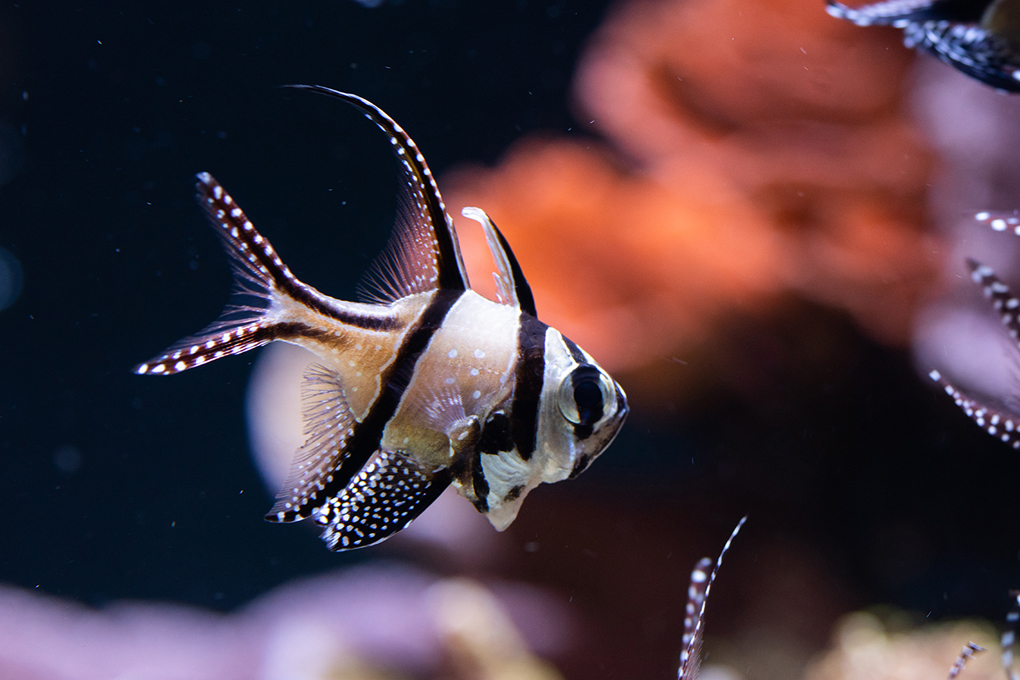Pterapogon kauderni
Fast Facts
- Each individual cardinalfish has different markings and color patterns.
- Newborn babies live in their dad’s mouth, known as mouthbrooding.
- They use long-spined urchins for protection.
- They are one of the few cardinalfish species that are also active in the day.


Range
Banggai Islands, Indonesia

Habitat
Tropical silty sand bottoms with seagrass

Size
Up to 3.5 inches

Nutrition
Worms, fish larvae, mollusks, and more
Characteristics
Easily recognized by its tasseled first dorsal fin, elongated anal and second dorsal fins, deeply forked caudal fin, and striking color pattern. The shiny, silvery body is distinctively marked with three vertical black bars, one running down the head and the other two down the fish’s flanks. The mouth and eyes are extremely large.
Behavior
The Banggai cardinalfish is associated with Diadema setosum, the long-spined sea urchins. Individuals of 2 to 60 fish hover directly above the urchins, with the younger ones staying within the urchin’s spines.
Reproduction
When a female chooses a mate, the pair separates from the group and establishes their own territory, which is defended aggressively if necessary. The eggs take about 20 days to hatch, after which the newly hatched embryos continue to develop in the male’s mouth pouch. After a further 10 days, when the young have reached around five to six millimeters in length, they are released. During the 30-day brooding period, the male does not eat and attends to the brood by frequently turning the eggs and expelling dead eggs and embryos.

